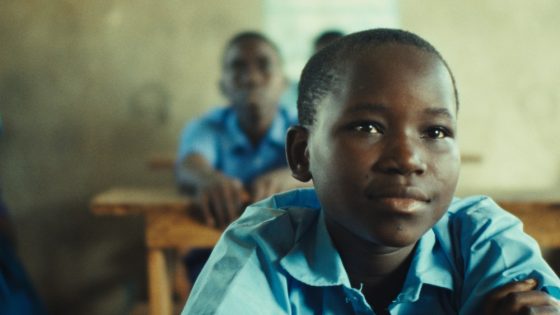A 10-year-old Kenyan girl determined to buck village tradition and pursue her dream of sailing to Europe is at the heart of “After the Long Rains,” a tender, coming-of-age tale from Zurich-born filmmaker Damien Hauser.
The director’s third feature, which world premiered at the Red Sea Film Festival last year before screening in Rotterdam, plays this week at the Durban Film Festival, which runs July 18 – 28. It marks a return to the South African fest for the 23-year-old, whose debut, “Blind Love,” premiered in Durban’s 2020 pandemic edition. Cologne-based Rushlake Media is handling world sales.
Born in Zurich to a Swiss father and Kenyan mother, Hauser was raised in Switzerland, where he studied film at the SAE Institute in his hometown. As a budding filmmaker, he began using his work behind the camera to deepen his relationship with Kenya, a country he visited often growing up but “never got to know” as a child, when he was caught up in the whirlwind of his extended family while traveling to the East African nation with his mother.
That changed during the coronavirus pandemic, when Hauser spent half a year with his grandmother in her small village on the Indian Ocean coast. It was during that period that he shot “Blind Love” and picked up Swahili — far from fluent command of the language, he insists, but well enough to engage him creatively and open new pathways for him as a filmmaker. “Since then, so many stories popped up in my mind which I’d like to tell,” he said. “There’s something that draws me to Kenya, which always brings me back.”
“After the Long Rains” is an intimately realized portrait of village life, where tradition is a powerful force that will set a person’s life on course from an early age. The initial inspiration for the film came from the precocious young daughter of one of his aunt’s neighbors, who impressed Hauser with the outsized responsibilities she took on in running her family’s household. That girl finds an onscreen foil in Aisha, a dreamy youth who’s less committed to her schoolwork than to the conviction that she can follow her own path in life, regardless of what her community’s conservative mores dictate.
Hauser says the emotional framework of the film came from his relationship with his mother, and his effort to draw closer to her. Though she often talked about her life in Kenya, he said, his portrait of her was incomplete, and he “never had a clear image of her.” It was only after spending time with his grandmother that details about his mother’s childhood began to emerge. “[The film] became much more personal, because I got to know about my own mother and her life before I was born,” he said.
As with his debut, “After the Long Rains” is a testament to the director’s low-fi approach to filmmaking — a throwback to his childhood, when he shot improvised movies with his friends using a “little, trashy camera” that was a Christmas present from his father. Most of the camerawork in the film was done by Hauser, who also wrote and produced. He had a guerrilla crew of four locals who largely worked as fixers over the course of the six-week shoot.
From the start, it was an unconventional production. “When I arrived, I didn’t know anybody. And after two weeks, we started shooting,” Hauser said. Most of the actors — including his young lead, Eletricer Kache Hamisi — had no formal training for the screen. Casting was an informal process that continued after the cameras started to roll. Location scouting, too, took place while the production was already underway. “When you’re shooting in Kenya, especially in the village, you have to be very spontaneous,” said the director. “But it can be very exhausting, because you always have to be planning from day to day.”
Having tallied countless trips to Kenya over the course of the past two decades, Hauser has watched as the internet and mobile phones have transformed East African life, even in the rural area where “After the Long Rains” is set. “Younger people are exposed to the whole world and Western beliefs,” he said. That break from tradition, however, is a source of unease for many. It is that friction between old and new that gives the film its narrative force, as Aisha — taken under the wing of a local fisherman — attempts to chart her own course.
“Many people feel that this old world they grew up in is fading away,” said Hauser. “But you have to accept what is coming, because the world is constantly changing.”
Source Agencies




